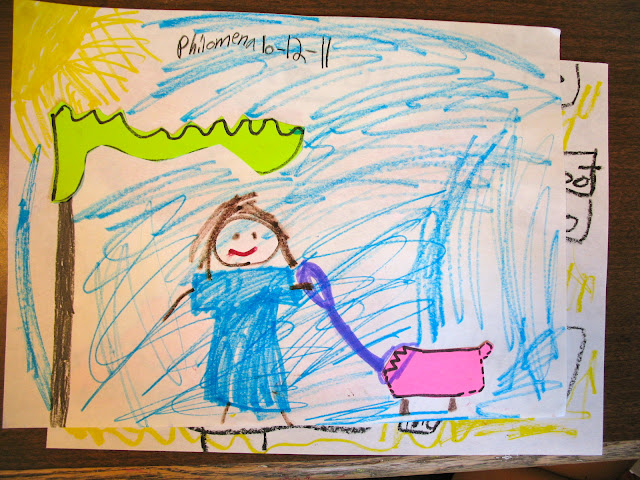have been comparing and contrasting organic and geometric shapes.
To begin, we talked about how shapes are made using lines. We talked about how geometric shapes are symmetrical and usually made with straight lines, and we compared geometric shapes to organic, which are not symmetrical, and are generally made with crazy, lumpy, curvy, and zig-zag lines that when combined together,
remind of things in nature.
In order to make our own organic shapes that are "shapes that don't have names", we played a game using different types of lines. Each shape was made spontaneously, by students using a certain number of a specific type of line, combined with specific amounts other types of lines.
The results were certifiably organic.
Right before we began examining the shapes we made, we looked at this book by Lisa Campbell Ersnt. In her book, she begins with the alphabet and examines each letter shape in different directions. Each way you turn a letter, you see something different. The students were really excited by her revelations, and were able to see what she saw in each letter. Some of the students immediately began looking at their own organic shapes from every direction, such as the student above.
Next, I had all the students cut out the organic shapes they had made, and look at them from different directions to decide what they could become. Students then glued down their shapes onto paper, basing their placement upon what the shapes would become.
 I then asked the students to add to their shapes suing drawing materials, as well as the background behind them, in order visually show others what they saw in each shape.
I then asked the students to add to their shapes suing drawing materials, as well as the background behind them, in order visually show others what they saw in each shape.  |
| I love this person, whose skirt and hat are made from organic shapes! |
 | ||||||
| One shape has become a dog, and the other a flag. |
One thing I like about this project, is that I believe it helps students think about drawing objects in different ways, other than their already traditional ways of representing objects. I want students to realize that there are other ways they can describe something like a flag or a car beyond what they automatically draw. K-4 students (and adults too) generally use something called a schema when they draw. A schema is a system or catalog of representation that students use to communicate and fall back on. The catalogs evolve as students get older, but they generally draw things in the same way all the time. I think schemas are important, but believe students should also be pushed to draw in new and different ways, both realistically, symbolically and figuratively.
 |
| "I see a bird and this is a milkshake". |
 |
| A mushroom garden and a clever bat appear in this drawing. |





Henry Bonzak says "I like the drawings."
ReplyDeleteKate says I like your explanation of schemas and the challenges of getting beyond your comfort level with drawing to become more figurative, realistic and symbolic.